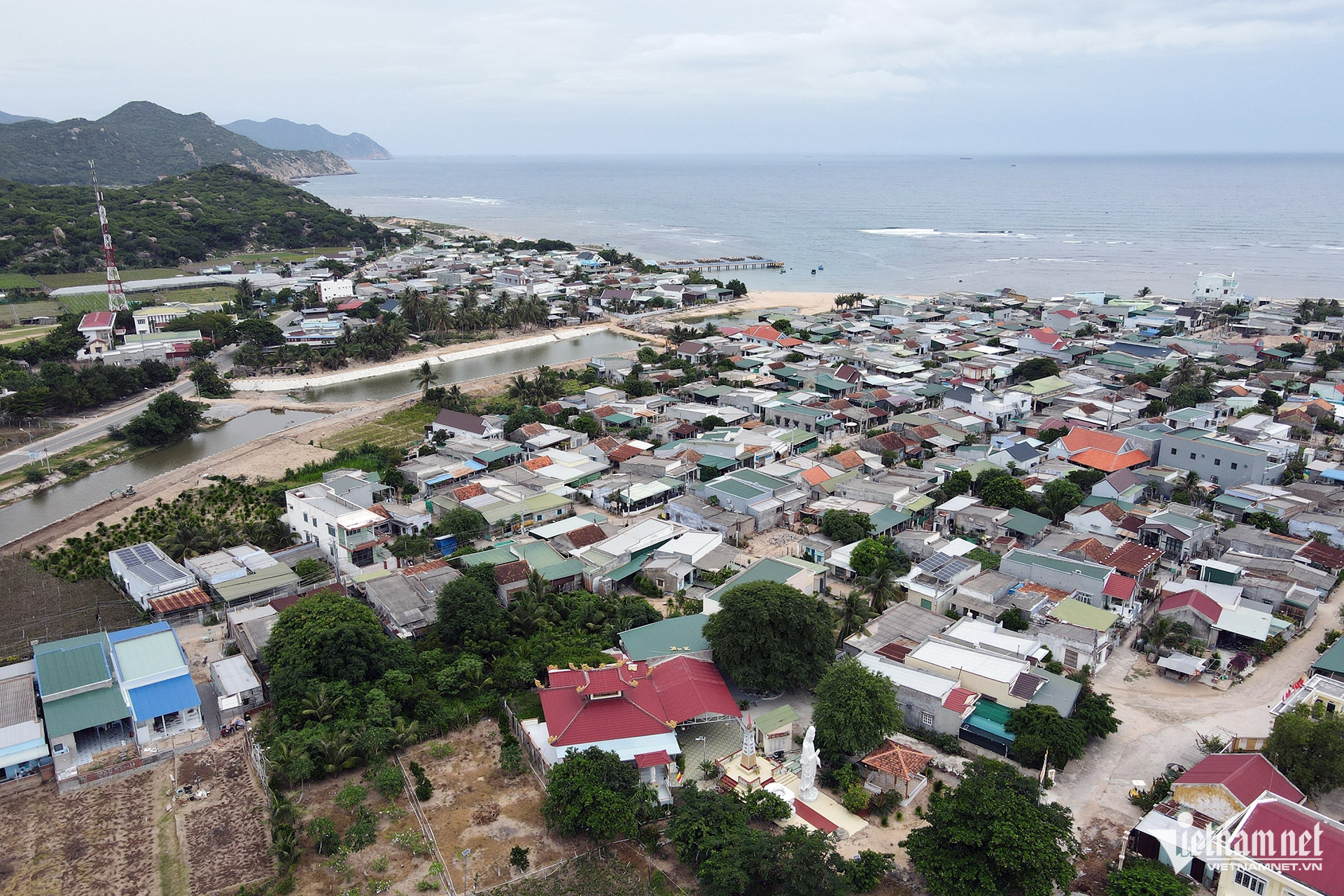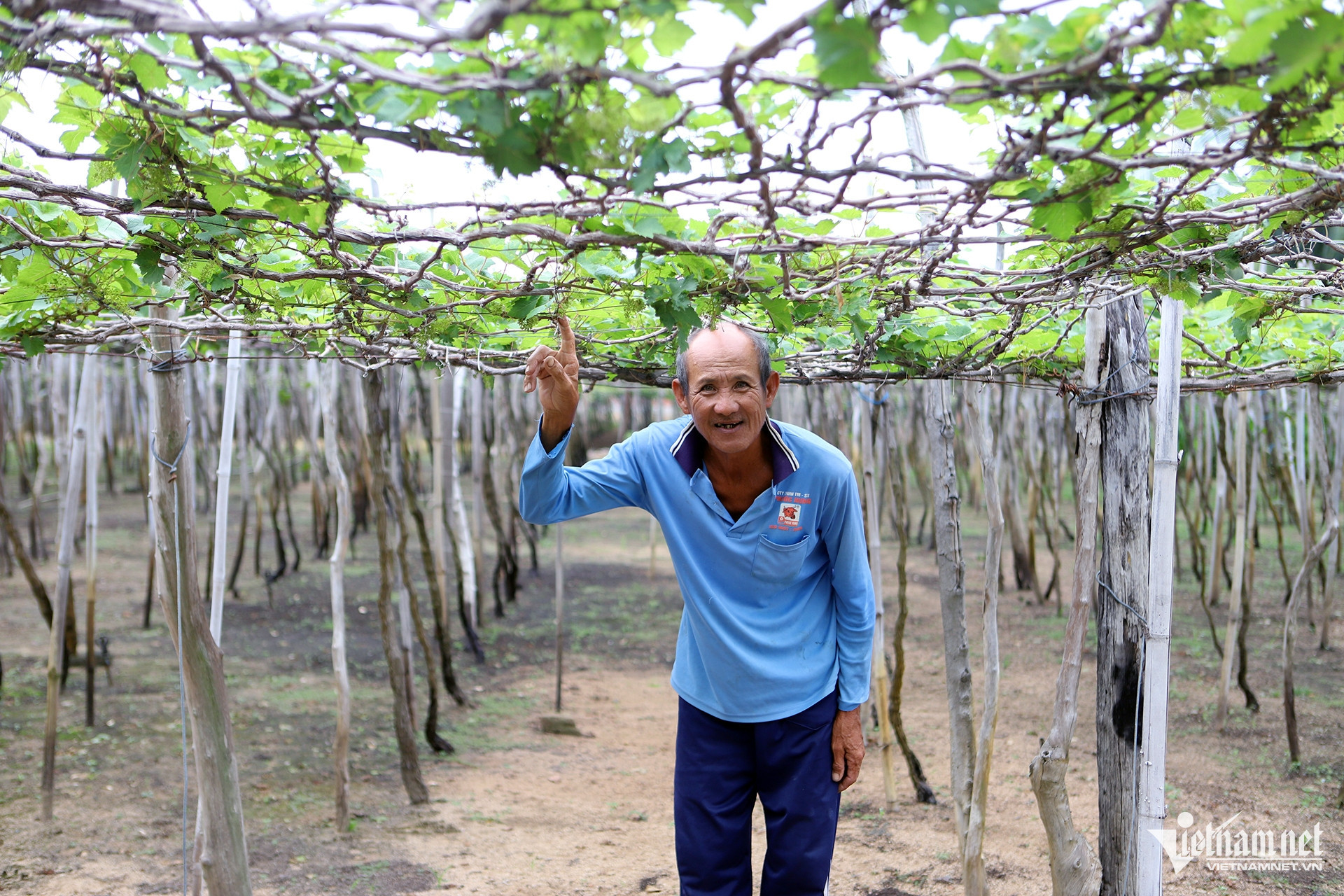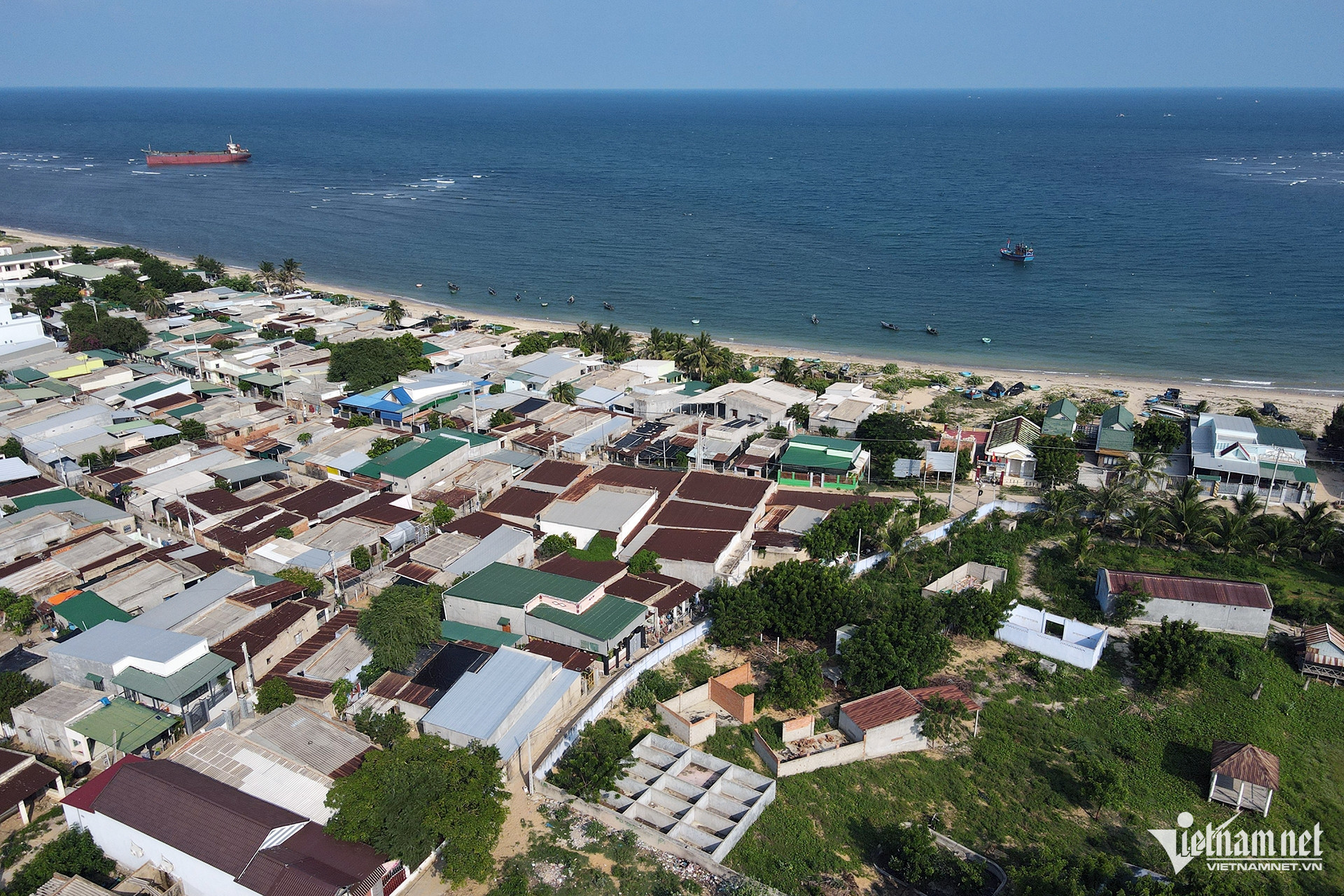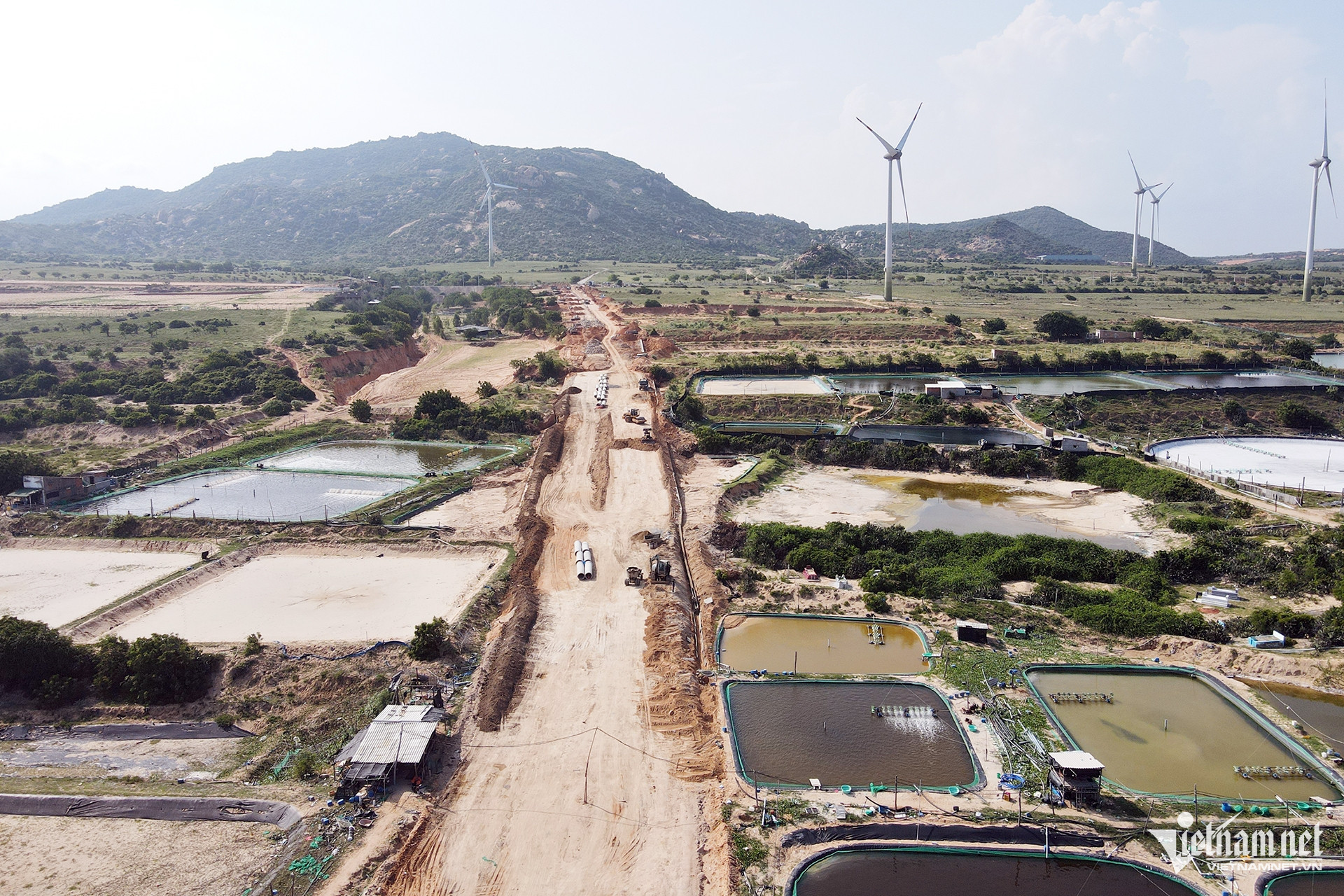Xuan Ngoc
More than a year after the Ninh Thuan People’s Committee announced the cancellation of land reclamation on the 820 hectares designated for the Nuclear Power Plants 1 and 2, local residents are gradually stabilizing their lives. However, they are still awaiting a final decision on the future of nuclear power.

The road leading into Thai An Village (Vinh Hai Commune, Ninh Hai District)—formerly designated as the site of Nuclear Power Plant 2, spanning 380 hectares—has seen improvements to infrastructure, roads, electricity, and water systems, while houses are now sturdily constructed.
Nguyen Van Man, a 62-year-old resident of Thai An, proudly showed off his family’s lush vineyard, spanning three sao (roughly 1,080 square meters). His vineyard, cultivated over nearly two decades, yields around VND 150 million per year, significantly boosting his family’s income.

More than ten years ago, the area where Man lives was allocated for the nuclear power project, which was met with local support as residents hoped the project would bring development opportunities and jobs. However, after years without progress, the National Assembly decided to pause the project in 2016, leaving residents in prolonged uncertainty.
According to Man, this drawn-out uncertainty left the village in a precarious situation, with their land effectively “frozen” under pending planning.
Similarly, residents in Vinh Truong Village (Phuoc Dinh Commune, Thuan Nam District) - the proposed site for Nuclear Power Plant 1, spanning 440 hectares - are beginning to stabilize. New houses are being built, and people are investing in local economic activities.
In the early afternoon, Doan Huynh Ho Hai, a 50-year-old resident of Vinh Truong, was busy cleaning a sea snail pond with a team of workers. His family had maintained a modest operation due to the uncertainty surrounding the land, reluctant to invest in expanding it. However, since the provincial government lifted the restrictions over a year ago, he has been able to lease additional ponds and expand his production.

In an interview with VietNamNet, Tran Quoc Nam, Chairman of the Ninh Thuan People’s Committee, explained that the provincial authorities had previously coordinated with central agencies to advance the nuclear project in the area.
After the National Assembly halted the project in 2016, and with the cancellation of land reclamation in 2023, the province has invested in essential infrastructure projects in Phuoc Dinh Commune, Thuan Nam District, and Vinh Hai Commune, Ninh Hai District, to support economic recovery and improve residents’ livelihoods.
For the two areas designated for the nuclear projects, the province is working on parallel tasks, including land surveys, upgrading roads and infrastructure, and completing unfinished work. "Where work has been done, we will keep it in place; where it hasn’t, we’ll suspend activities so that residents can exercise their rights,” Chairman Nam said.
Finding suitable locations for nuclear power plants in Ninh Thuan was a challenging and lengthy process, involving extensive studies and a rigorous selection process that met international standards.
In an interview with VietNamNet, Dr. Le Hai Hung, former lecturer at the Institute of Engineering Physics, Hanoi University of Science and Technology, and current Director of the Institute for Research and Application of Technology (IRAT), noted that the groundwork for nuclear power projects in Thuan Nam and Ninh Hai had largely been completed. Selecting suitable locations for nuclear facilities is a complex process, he explained.
According to the International Atomic Energy Agency (IAEA), selecting nuclear plant locations involves three stages:
- Stage 1: Site identification and preliminary investigation
- Stage 2: Site assessment
- Stage 3: Further studies before and after operation
Stage 1 itself includes three phases: Phase 1 involved regional analysis and identification of potential sites (conducted from 1996-2000); Phase 2 involved screening and selecting candidate sites; Phase 3 involved comparing and ranking sites (carried out from 2001-2007).
The IAEA’s stringent criteria covered electricity supply, cooling water, potable water sources, site stability, seismic activity, volcanic risk, extreme weather events, accessibility, and local support, among other factors.

To support site assessments, consultants including the E4-KIEP-EPT Consortium and JAPC conducted extensive studies over several years. Initially, 20 potential sites in 11 provinces were identified. After further assessment, 10 sites in 7 provinces were shortlisted, eventually narrowing down to 8 sites in 6 provinces. Among them, Vinh Truong Village in Phuoc Dinh Commune and Thai An Village in Vinh Hai Commune, Ninh Thuan, met the IAEA’s requirements after extensive study by domestic and international partners.
The site selection process was costly. From 2010 to 2015, the feasibility studies and site assessments cost more than $30 million per site, funded as non-refundable aid by the Russian and Japanese governments.
Following the suspension of the nuclear power project, the relevant ministries and agencies have recommended preserving the existing nuclear project plans.
Nguyen Han, Head of Thai An Village, noted that agriculture, such as growing grapes, onions, garlic, and fishing, remains the economic strength of the area. Since the cancellation of land reclamation over a year ago, residents have felt secure enough to invest in production and development. On behalf of the villagers, Han urged the authorities to make a clear decision about the nuclear power project’s future.
“If the nuclear planning continues, the government needs to ensure timely relocation, provide agricultural land, and establish long-term resettlement policies,” Han stated.

Ninh Thuan Province invests in infrastructure projects to restore production and stabilize the lives of residents in areas previously planned for nuclear power. Photo: Xuan Ngoc